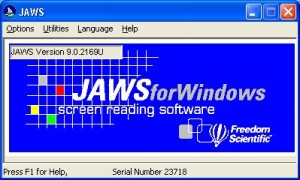Web Accessibility
The basics of web accessibilities is designed to let all people use web given different conditions, which means people with disabilities can also perceive, understand, navigate, and interact with the web page that will allow them to contribute and make improvement to the web itself.
Web are meant to removes barriers to communication and interaction that many people face in the physical world. But at the same time, badly designed web pages, technologies and tools could also create a barrier that prevent people from using it.
With that in mind, so how then do we create a web that is accessible to all?
Evaluating Accessibility
Evaluating all the accessibility early and thoroughly during the initial developmental phrase is easier to address than the final phrase.
Some of the important points to take note of:
#1 Alternative Text for Images
Images used should include equivalent alternative text in the markup/code. If somehow the image could not be shown on the page and alt text isn’t provided for, the image information will be inaccessible, an example would be when a user who have issues with visual, and need to use a screen reader (JAWS) software that reads aloud the information on a page, including the alt text for the image, and if there isn’t any text on alt text, that particular user will have no idea what the content is all about.

#2 Keyboard Input
Assistive Technologies that mimic the keyboard, an example is speech to text conversion. For user who had issue with movements. Some of your site users don’t have access to a mouse when browsing the internet. Navigating your website using only tab, shift-tab, and the returns keys.
#3 Transcript for Podcasts
Providing a text Transcript make audio information accessible to people who have hearing issues.

A short video for experiences of students with disabilities
A longer version
Conclusion
The web offers many opportunities to people with disabilities that are unavailable through any other medium. It offers independence and freedom. However, if a web site is not created with web accessibility in mind, it may exclude a segment of the population that stands to gain the most from the internet. Most people do not intend to exclude people with disabilities. As organizations and designers become aware of and implement accessibility, they will ensure that their content can be accessed by a broader population.
REFERENCES
https://www.youtube.com/watch?t=232&v=yx7hdQqf8lE
https://en.wikipedia.org/wiki/Wikipedia:Alternative_text_for_images



You must be logged in to post a comment.